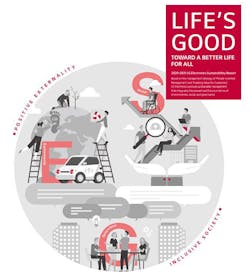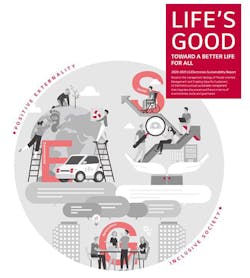LG Sets Renewable Energy Goal
On July 21, 2021 LG Electronics Inc. made public its commitment to transition completely to renewable energy by 2050 as a key component of its sustainability strategy. The announcement in the recently released LG Electronics Sustainability Report follows its earlier commitment to carbon neutrality through the Zero Carbon 2030 initiative, in which LG has pledged to reduce carbon emissions in the production stage to 50 percent of 2017 standards by 2030.
The transformation will be implemented region by region starting in North America where every office and manufacturing site will be powered by renewable energy within the year. LG manufacturing facilities outside of Korea are on target to convert 50 percent of their electricity needs to renewable energy in the next four years.
Strategy will include installing high-efficiency LG solar panels on its buildings, utilizing power purchase agreements that allow companies to purchase electricity directly from suppliers, utilizing Renewable Energy Credit (REC) certificates.
Achieving this objective globally will require a diverse strategy, including installing high-efficiency LG solar panels on its buildings, utilizing power purchase agreements that allow companies to purchase electricity directly from suppliers, utilizing Renewable Energy Credit (REC) certificates and participating in the Green Premium program in Korea, LG’s home market to purchase clean energy directly from the Korea Electric Power Corporation (KEPCO).
“Our commitment to creating a better life for all can best be actualized by LG transition to renewable energy and achieving carbon neutrality,” said Park Pyung-gu, senior vice president at LG Electronics Safety & Environment Division. “In today’s world, innovation doesn’t just happen in the lab, they must also happen in our factories and plants. Today’s manufacturers have a once-in-a-lifetime opportunity to give the next generation a world worth inheriting and at LG, we take this responsibility very seriously.”
* CDM project allows companies to earn certified emission reduction (CER) credits when investing projects in developing countries. CER can be traded, sold and used to meet a part of the emission reduction targets under the Kyoto Protocol.

